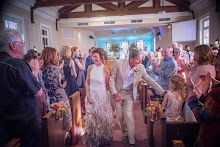Tuesday, Jan. 31: Using More of Ourselves
USING MORE OF OURSELVES
This is an idea with a lot of power and zest, this idea of using more of ourselves. We can lift our hand from the hand, or from the shoulder, or from the back, or from the back connected to the pelvis, or from the back connected to the pelvis connected down to the feet on the ground.
This last way of using ourselves will be the most powerful, and the most easy, and the most efficient, which means it will take the least effort in the long run, though to list all the parts involved might make it seems as if it were a larger project. Well, truth be told, it is a larger project, and if we add on our awareness and our breathing, it is even a larger project, but this is another way of saying, we are involving more of us. Which is the opposite of being fragmented and disconnected.
Some people call this larger state, “grounded,” since they have a vague recollection of the time when human beings were daily and constantly connected to the real ground. But, when we sense from our feet up through our legs and pelvis and spine and from that integral connection to the real ground, then move our hand to reach for and connect with something, say an apple on a tree branch up high above, then we are really grounded.
So, this is it, the simplicity of life: touching through to the ground in everything we do. Even now, as I type into this computer, can I be connecting down into the ground, and the ground that I press down into with my seat through the chair on which I sit? Can I be grounded there? Grounded in the feet, grounded in the seat and what is holding me up in all this? What is keeping me from collapsing into a pile on the Earth?
Bones, or course, the skeleton, that hard set of scaffolding that can move every which way. The bones keep me up and the muscles move the bones into different shapes and if I’m lucky I can pay attention to just what shape I’m in.
Again, literally, what shape am I in? Is my shape such that my legs cross each other? Where are my arms and spine in space? How does it all fit together? For all its misuse as a masochistic self-improvement scheme where most students just push themselves around, yoga is wonderful for this: try this shape and see if you can notice all of yourself. Now try this shape.
The shame of yoga is that you are given so little time to explore and really understand what a given shape is. To really understand something, you must move this way and that. A little too long, a little too short, a little too much to the right, a little too much to the left. The arm a little long, a little shorter, the twist a little more, a little less.
And then there are all the wonderful Feldenkrais variation that yoga misses out on, what if you try head turning one way, while the eyes turn the other? What if you try breathing in with your stomach out, and try breathing out with your stomach out? What if you balance on the inside of your feet and the outside? What if you try this with your eyes closed and your eyes open? What if you do this as a movement in and out of a posture, instead of just pushing yourself into a certain shape and then that is it?
What if the right shape for the posture today is not the same shape it was yesterday? Are you using enough of yourself to tell the subtle differences from today and yesterday? Will you be able to discover something else tomorrow? How much of you can you be aware of and learn about as you go about this business of life?








